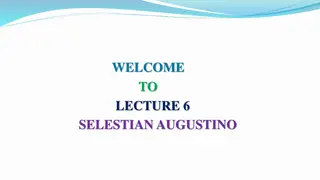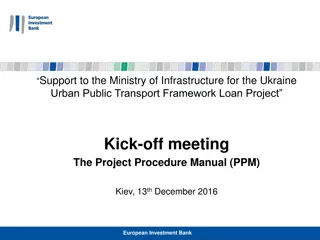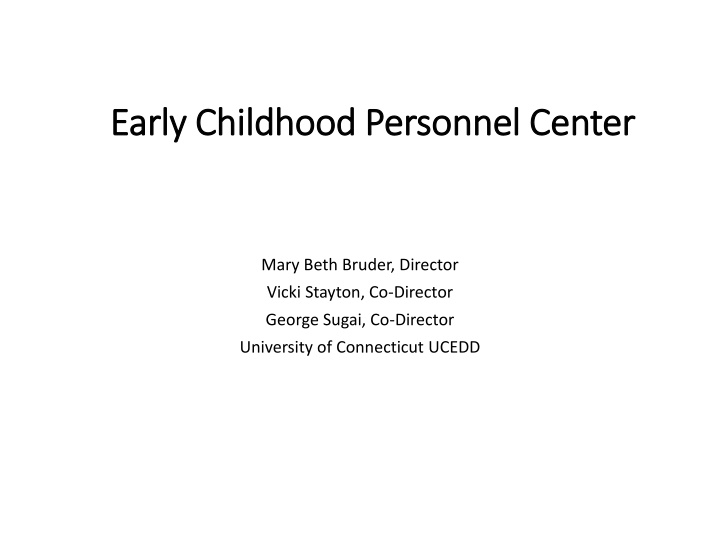
Early Childhood Personnel Center: Enhancing Workforce Development for Children with Disabilities
"Explore the Early Childhood Personnel Center at the University of Connecticut, dedicated to improving the quality of services for infants and young children with disabilities through comprehensive personnel development. Discover their focus on leadership, coordination, and sustainability in nurturing a competent workforce for better child and family outcomes."
Download Presentation

Please find below an Image/Link to download the presentation.
The content on the website is provided AS IS for your information and personal use only. It may not be sold, licensed, or shared on other websites without obtaining consent from the author. If you encounter any issues during the download, it is possible that the publisher has removed the file from their server.
You are allowed to download the files provided on this website for personal or commercial use, subject to the condition that they are used lawfully. All files are the property of their respective owners.
The content on the website is provided AS IS for your information and personal use only. It may not be sold, licensed, or shared on other websites without obtaining consent from the author.
E N D
Presentation Transcript
Early Childhood Personnel Center Early Childhood Personnel Center Mary Beth Bruder, Director Vicki Stayton, Co-Director George Sugai, Co-Director University of Connecticut UCEDD
Early Childhood Personnel Center to facilitate the implementation of integrated and comprehensive early childhood systems of personnel development (CSPD) for all disciplines serving infants and young children with disabilities
Personnel Can Have a Powerful Impact.... or NOT or NOT
Logic Model Logic Model Early Childhood CSPD leads to a Competent and high quality workforce which leads to Improved child and family outcomes
A Comprehensive System of A Comprehensive System of Personnel Development Personnel Development is a necessary and integral quality indicator of an early childhood service system AND the early childhood workforce who serve infants, toddlers and preschool children with disabilities and their families
Comprehensive System Of Personnel Development Comprehensive System Of Personnel Development Leadership, Coordination & Sustainability Structures for ongoing support of all personnel development activities Recruitment and Retention Strategies to identify, hire and maintain a qualified workforce across sectors and disciplines Personnel Standards Discipline specific knowledge, skills and competencies for the EC workforce Preservice Training Formal program of study at an IHE to prepare for the EC workforce Inservice Training Ongoing learning activities to maintain and build the competence of the EC workforce Evaluation Plans for evaluating each subcomponent of the CSPD
Outputs of the ECPC 1 Outputs of the ECPC 1 Knowledge Development Technical Assistance Leadership and Coordination
1) Knowledge Development 1) Knowledge Development National Data Base of CSPD Components as reported by Part C and 619 Coordinators National Data Base of State Personnel Standards National Initiative on Cross Disciplinary Standards Research Syntheses on Personnel Issues
National Data Base of Personnel Standards National Data Base of Personnel Standards 13 disciplines 20 variables A two-step procedure was implemented: Step 1: Internet-based data collection (with inter-rater reliability) Step 2: Telephone interview for verification. Analysis: Frequency count and percentage Findings: Each state dramatically varied in personnel standards. Related service disciplines had less variance. Less than 1/3 of the states specified additional requirements for working in Part C.
Cross Cross- -Disciplinary Organizations Disciplinary Organizations Council for Exceptional Children Division of Early Childhood (DEC) of the Council for Exceptional Children (CEC) National Association for the Education of Young Children (NAEYC) American Occupational Therapy Association (AOTA) American Physical Therapy Association (APTA) American Speech-Language-Hearing Association (ASHA) Zero to Three
ECPC Cross Disciplinary EC Personnel Competencies AOTA, APTA, ASHA, DEC, NAEYC & ZTT Family Centered Practice Data-Based Intervention/Instruction Coordination & Collaboration Professionalism
Family Centered Practice Family Centered Practice Parent Partnership, Advocacy & Help-Giving Parent Education in Child Development & Interventions Family Involvement in Assessment Cultural, Linguistic and Socioeconomic Competency Family Systems Theory Laws & Policies Supporting Home Language Development Stress, Trauma, & Safety Parent/Caregiver Social Emotional/Attachment Communicating with Families Nutrition
Intervention/Instruction Informed by Evidence Intervention/Instruction Informed by Evidence Intervention Assessment Knowledge of Typical Child Development & Behavior Communicating & Interpreting Assessment Results Progress Monitoring Evidence Based Practice Health & Safety IEP/IFSP Knowledge of Risk Factors & Atypical Child Development Accommodations & Adaptations Service Delivery Models
Coordination and Collaboration Coordination and Collaboration General Teaming Resource & Referrals Effective Communication Transitions Teaming with Families Role as a Consultant Problem Solving Leader of a Team Medical Home Positive & Respectful Relationships
Professionalism Professionalism Advocacy/Public Awareness Laws, Policies & Practice Standards Professional Development & Self-Reflection Knowledge of the Field Ethics Administrative Leadership Supervision Communication Wellness
EC Alignments Completed For: EC Alignments Completed For: Initial NAEYC and CEC Standards and Elements Advanced NAEYC and CEC Standards and Elements Initial NAEYC Standards and Elements with DEC Initial Specialty Set (K & S statements) Advanced NAEYC Standards and Elements with DEC Advanced Specialty Set (K & S statements)
Effective Training Effective Training- -Research Meta Research Meta- -Synthesis Synthesis 1. The explicit explanations and illustrations of content or practice to be learned 2. Active and authentic job-embedded opportunities to learn the new practice 3. Performance feedback on the implementation of the practice 4. Opportunities for reflective understanding and self-monitoring of the practice implementation 5. Ongoing follow-up supports 6. Sufficient duration and intensity of training to provide multiple opportunities to become proficient in the use of a practice Dunst, C.J., Bruder, M.B. and Hamby, D.W. (2015)
2) Technical Assistance 2) Technical Assistance General: To provide information and resources on personnel development Targeted: To align national and state personnel standards Intensive: To develop an EC CSPD within 11 states
Intensive TA States Intensive TA States Cohort 1: DE, IA, KS, OR completed! Cohort 2: AZ, NV, PA, VT in progress or completed Cohort 3: MN, PR, SC in progress!
How Will We Do This ? How Will We Do This ? Content Content: Method: Method: strategic planning Outcome: Outcome: Scaling up Scaling up of effective practices for personnel development CSPD CSPD Implementation frame Implementation frame through
Building a Model Building a Model Operational definition and reliable measurement of the outcomes Socially valid relationship between intervention and socially valid outcome: if/then Consistency of effects across users Advantage of alternative service delivery Fidelity of Implementation Paine, Bellamy & Wilcox, 1984
PHASE ONE: Exploration PHASE ONE: Exploration Develop core planning team and project liaison Identify stakeholders for strategic planning team Identify a date and place for strategic planning Complete self assessment of the framework
PHASE TWO: Installation PHASE TWO: Installation Invite stakeholders to be part of strategic CSPD team Develop strategic plan Assign stakeholder to CSPD component workgroup Establish meeting and reporting schedule
PHASE THREE: Implementation PHASE THREE: Implementation Objectives and activities of strategic plan Engage in problem solving activities Workgroups document, evaluate, and report findings recommendations on tasks Coordinate across all components and workgroups of CSPD to review progress and make recommendations to CSPD objectives
PHASE FOUR: Standardization PHASE FOUR: Standardization Reassess and prioritize objectives and outcomes based on results of implementation annually Prepare annual report of planning group process and recommendations Develop an evaluation process of the state's CSPD components Evaluate CSPD and recommend needed modifications for sustainability
Intensive TA Intensive TA Personnel Framework is the Foundation for Strategic Planning with Stakeholders Who Form a CSPD Plan With On-going Committees
Strategic Planning for a CSPD Strategic Planning for a CSPD Process by which CSPD: Sets its direction States its intent Establishes parameters for implementation
CSPD should include: CSPD should include: Clear statement of the problem the strategic plan intends to address Broad goal statement of what to be accomplished Outcome-oriented objectives which move toward that accomplishment Strategies and actions which will enable the accomplishment of objectives Operational guidelines for implementation
Strategic Planning Sequence Strategic Planning Sequence Values Vision Mission Capacity Objectives Workgroups Evaluation
Intensive TA States Intensive TA States Cohort 1: DE, IA, KS, OR completed! Cohort 2: AZ, NV, PA, VT in progress or completed Cohort 3: MN, PR, SC in progress!
State Team Strategic Plan Participants State Team Strategic Plan Participants Part C = 35 Pre-Service/IHE= 15 619 = 35 In-Service/TA/ = 13 Head Start = 15 UCEDD = 7 Child Care = 16 Family = 11 Race to the Top = 4 State/Other Early Childhood =72 Home Visiting = 2
Vision Statement: Iowa Vision Statement: Iowa Every child, beginning at birth, will be healthy and successful
CSPD Mission Statements CSPD Mission Statements To advocate, create, and implement a statewide, comprehensive early childhood professional development system to improve quality and services for all children and families. - Delaware CSPD Our Early Childhood Comprehensive System of Personnel Development will be a well- communicated system of integrated professional development supports for early childhood professionals across disciplines that directly impact infants, toddlers, and preschoolers with and without diverse abilities and their families. -Iowa CSPD We will create an integrated professional development system for all practitioners who provide services to young children with special needs ages birth to 5 that is linked to national and state standards and integrated within existing professional development systems in our state. -Oregon CSPD
3) Leadership and Coordination Leadership Institute with Part C and 619 Coordinators (25 states) Collaborate with other OSEP Early Childhood TA Centers Collaborate with other DoE and HHS TA Centers
FOCUSOF ECPC LEADERSHIP INSTITUTE To integrate Part C/Part B 619 programs into statewide early childhood policies, practices, programs, and personnel development activities
Early Childhood Personnel Center 2 Early Childhood Personnel Center 2 to facilitate the implementation of comprehensivesystems of personnel development (CSPD) for all disciplines serving infants and young children with disabilities and their families
A Comprehensive System of Personnel Development is a necessary and integral quality indicator of an early childhood service system AND the early childhood workforce who serve infants, toddlers and preschool children with disabilities and their families
Technical Assistance As a Construct ECPC 2 Will Deliver TA Using Evidenced Based Practices IN Collaboration with Others
Effective TA: Effective TA: Supports the reflective processes that professionals need to translate the theories and information learned through education and/or training into best practices. May include mentoring, coaching, consultation, PD advising, and peer-to-peer TA. May use strategies that are discrete processes, or used as part of education and/or training programs. Should be embedded in the recipient s broader professional development plan. Is relationship-based and builds positive, trusting, and respectful relationships.
(Early Childhood Education Professional Development: Training and Technical Assistance Glossary, NAEYC & NACCRRA, 2011). Continued: May be delivered by an individual or a team, to one individual or a group May include combinations of information and resource dissemination and referrals, coaching, mentoring, consultation, and professional development advising, peer- to-peer TA, as well as other forms of support. May use varied levels of duration and intensity depending on need and resources. May be provided face-to-face, through distance, technology-based, or hybrid methods.
Caveats: (Katz, 2015) TA techniques are not sufficient, and should be augmented with relationships. Trust, collaboration, respect, and encouragement were frequent supports to effective TA; Relationships are not sufficient and should be augmented with techniques using goals that are specific, measurable, attainable, realistic, and time- bound, or there is a risk that the TA will not be accomplished.
Partner Organizations Partner Organizations APTA AOTA ASHA ASTHVI AUCD CCAoA CCSSO CEC Child Trends DEC HECSE NAECS-SDE NASDSE NASDTEC NAEYC NHSA Part C ITCA 619 Affinity Group TED ZERO TO THREE
Methods of ECPC 2 Methods of ECPC 2 Rigorous Standards for Research Reviews, Syntheses, Needs Assessments, and Products Participant Driven Continuous Feedback Among and Between ALL Objectives Collaborative
Outputs of the ECPC 2 Outputs of the ECPC 2 Knowledge Development Materials, Resources and Tools Technical Assistance Leadership and Collaboration Management and Evaluation
Flow of ECPC Goals Flow of ECPC Goals Identify and Develop knowledge Develop or Identify Materials, Resources and Tools for the Early Childhood Workforce Provide TA to Specific Populations and State Early Childhood Systems
ECPC 2 To provide targeted TA to: early childhood IHE faculty and other professional development (PD) staff; State IDEA Part C and 619 administrators; families and graduate students to improve outcomes for infants and young children with disabilities and their families.
Intensive TA: Intensive TA: Comprehensive System Of Personnel Development Comprehensive System Of Personnel Development Leadership, Coordination & Sustainability Structures for ongoing support of all personnel development activities Recruitment and Retention Strategies to identify, hire and maintain a qualified workforce across sectors and disciplines Personnel Standards Discipline specific knowledge, skills and competencies for the EC workforce Preservice Training Formal program of study at an IHE to prepare for the EC workforce Inservice Training Ongoing learning activities to maintain and build the competence of the EC workforce Evaluation Plans for evaluating each subcomponent of the CSPD
How To Maximize TA.. How To Maximize TA .. Form A Leadership Team Gather Stakeholders to Identify Needs (eg. Focus Groups, Think Tanks, Meetings etc.) Confirm Needs Through Systematic Assessments (Scans, Surveys, Interviews of Informants, etc.) Prioritize Needs Develop a Logic Model of State Needs: Outcomes Identify Current Resources Identify Needed Resources
Bottom Line.. Bottom Line .. Develop A TA Plan To HELP States and IHE Meet THEIR Needs
AND AND Develop Measurable Goals, Objectives and Activities Develop Timelines and Responsibilities Implement Goals, Objectives and Activities Measure and Keep Measuring Outcomes

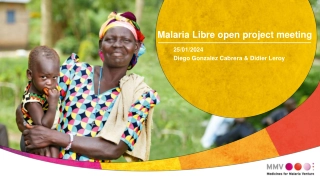
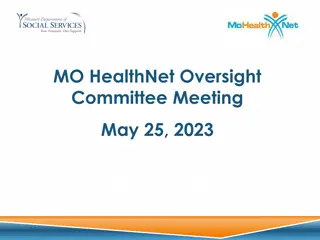

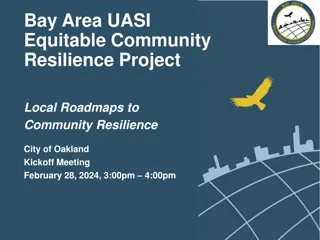
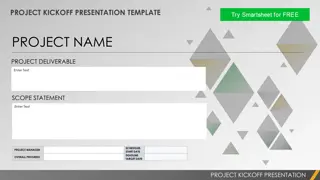
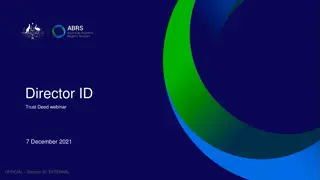
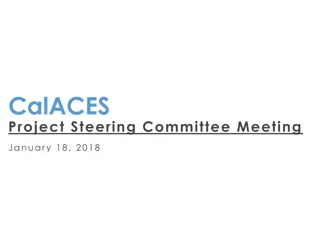
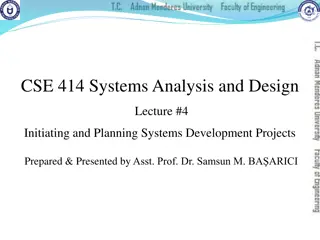

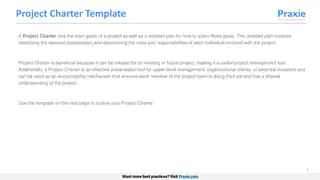

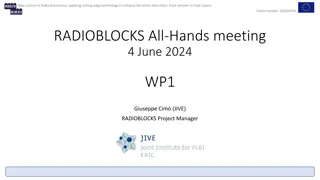
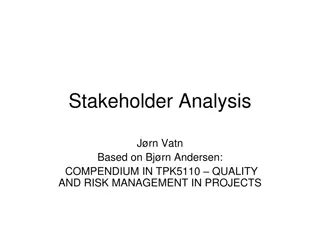
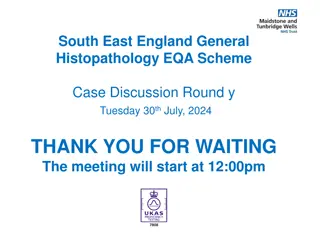


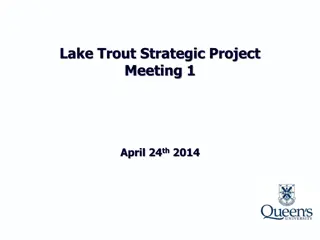
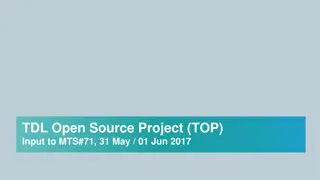
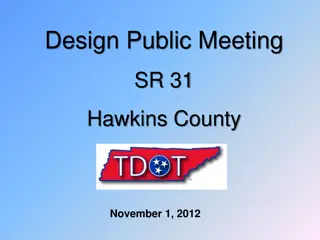
![Project Initiation Document for [Insert.Project.name] [Insert.Project.number]](/thumb/226757/project-initiation-document-for-insert-project-name-insert-project-number.jpg)
